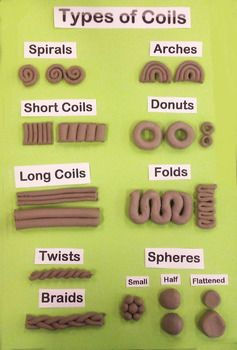21st Century Community-Based Museology
- TheArtofMrsCastaldi

- Mar 8, 2019
- 3 min read

In this response paper, I will highlight perspectives of contemporary museology and establishing a community-based model that provides a viewer experience through decolonization, collaboration, and a new order that focuses on the truth—not manipulating and fabricating an experiential experience. Authors Julie Marcus and Amy Lonetree discussed in this analysis question contemporary theories as to the purpose, significance, and new possibilities the 21st century museum. This response paper explores the various connections between present museology with decolonization, community-based collaboration, and developing a culturally true viewer experience through the collection of case studies, narrative essays, analyses, and research from various scholars. The conclusion of this reading response values the cultural, social, and educational efforts of 21st century museums, and creating new standards for a globally-conscious future that puts an emphasis on evoking an emotion and education of indigenous people through the past, present, and future.
Anthropologist Julie Marcus’ (2016) article Towards an Erotics of the Museum brings to light the objectified and sexualized role that many naïve art pieces are required to adopt. Marcus defines museum artifacts as the victim of the spectator’s objectifying gaze in which the object is stuck in “a moment of subjection and control….and is always sexualized, gendered, eroticized” (Marcus, 2016, p. 24). Marcus describes the museum as a theatrical affair in which both truth and desire and intertwined to create a fragmental narrative in which the spectators are unknowingly receiving a limited, biased, and often stereotypical educational experience. According to Julie Marcus (2016), “the truth is ever fragmentary, evaluation and narrative are impossible, because the truth can never be known let alone reconstructed from a vast distance, that there are no regimes of truth” (p. 23). Thus, Marcus argues that at the present time, most museums are failing to provide a true vision and education of various cultures via objects, relics, and artworks. Instead, the artwork is left to be the victim of a spectacle and theatrical piece of a curator.
Contrary to the belief that all museums are victimizing and desacralizing all primitive relics, objects, and art, art historian Amy Lonetree has researched and found a series of museums through her analysis that allow for and provide a voice onto the once silenced artifacts. Amy Lonetree is one of the leading researchers to complete extensive research on a series of tribal and indigenous museums that have undergone a renovations to create a decolonized exhibition experience. According to Amy Lonetree’s article Collaboration Matters: The Minnesota Historical Society, establishes a strategic plan that focuses on establish a community-based model that is defined as “the desire to move away from object-based presentations that focus on the functions and uses of objects according to ethnographic categories” (2012, p. 29). Thus, 21st century museums need to consult with various community-educated advisory boards to collaborate, develop, and create new interactive and interpretive museum exhibition strategies for the 21st century community. According to Lonetree (2012), the “native community constructed a collective public memory and history by developing a tribal museum—in this case, a hybrid tribal museum” (p. 27). The museums that Lonetree recounted in her article strived to renovate their museums to support educating the community, and providing an enrichment—instead of presenting a stereotypical, and uneducated collections of objects (Lonetree, 2012, p. 28). Decolonization is established through the creation of the hybrid-tribal museums. Decolonization can be established through: honoring past, present, and passing on knowledge of indigenous people; promoting healing through discussions of colonization and implications of both past, present, and future; and, continuing to challenge deep-rooted stereotypes (Lonetree, 2012, p. 28). Thus, decolonizing practices changes the relationships between indigenous people and contemporary museums.
Julie Marcus and Amy Lonetree both promote in their articles for a museum experience that does not deny both the naïve objects, and viewers that ability to establish a true educational experience. There appears to be a strong correlation between community-based collaboration and establishing truthful, non-fragmental, decolonized, and globally-conscious museum experiences for the 21st century spectator. Thus, it is important for curators to collaborate with a variety of advisory boards that are highly involved, and community-based to prevent any form of stereotyping within the museum exhibits from occurring.
Community-based collaboration within the field of 21st century museology provides a museum experience with the ability to educate, communicate, disseminate information, and experience a variety of emotions from various cultures and ethnographies. Community-based strategic plans are most important for creating both a cultural and social impact on the audience in breaking down stereotypes and begin the conversation to establish decolonization globally for a primitive forms of art.
References
Lonetree, A. (2012). Collaboration Matters: The Minnesota Historical Society. Decolonizing Museums: representing native America in national and tribal museums, 2, 24-49.
Marcus, J. (2016). Towards an Erotics of the Museum. Bulletin: Museum Objects: Experiencing the Properties of Things, 8(2), 229-244.


Comments